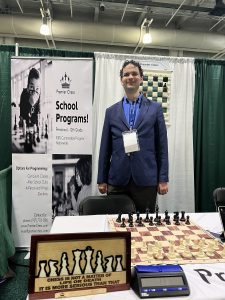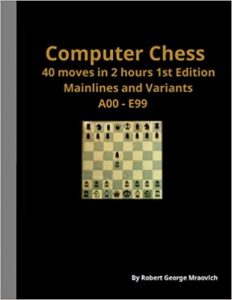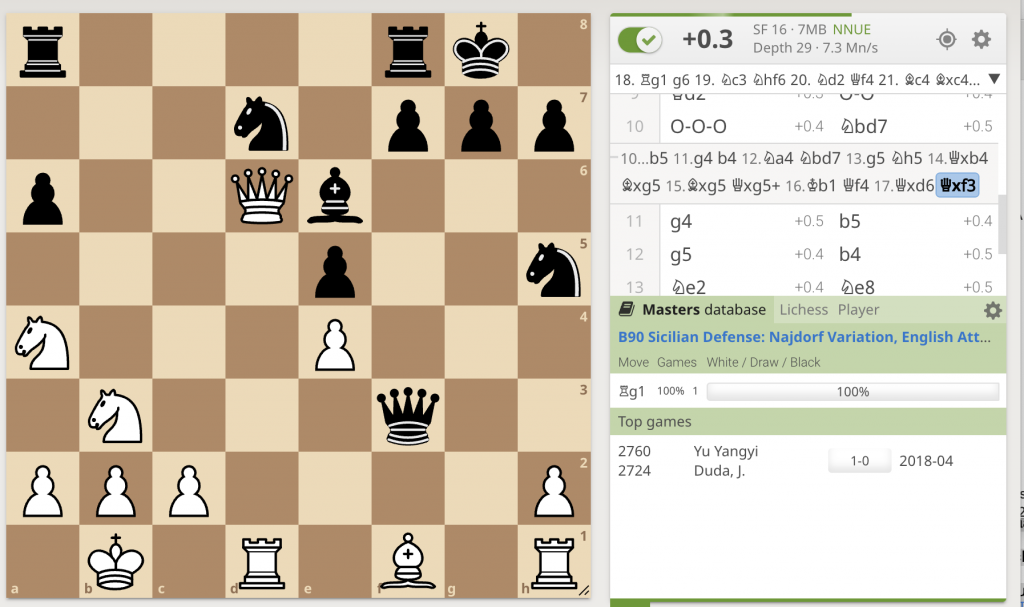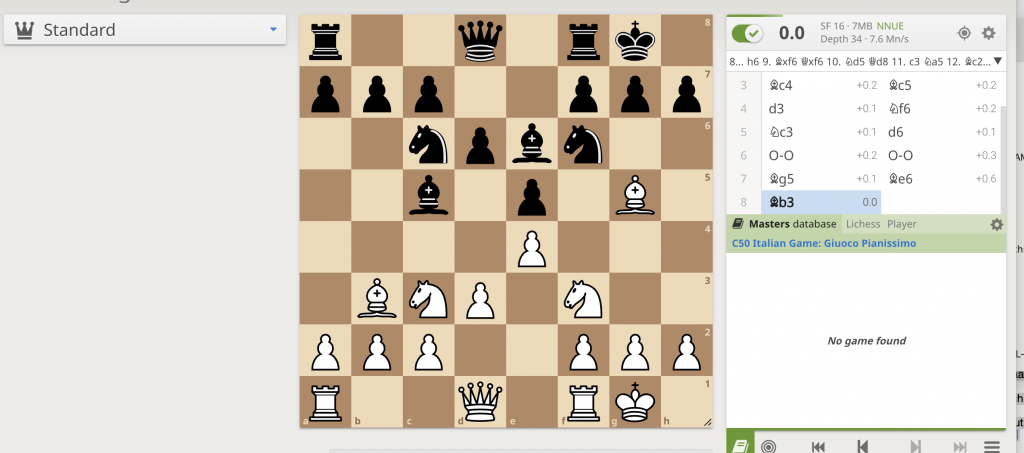By CEO National Master Evan Rabin

Players often agree to draws when there is still a lot of life left in the position. The computer’s evaluation of zero does not necessarily mean the game should end in a draw. There are three types of equal positions- dynamically equal, equal with a lot of life, and dead drawn.
three types of equal positions- dynamically equal, equal with a lot of life, and dead drawn.
Dynamically equal positions are ones where players have equal chances to win, but both sides have clear advantages. Despite the fact that the engine evaluates the position around 0.0, the game will most likely be decisive.
One common theme that leads to dynamically equal positions iis when kings are castled on opposite wings, like in the Nadjorf Sicillian English Attack:

In other positions, the position is equal in all of the seven steps and it can be hard for either side to make progress; however, there is a lot of life left in the position. For instance, let’s look at a popular boring, equal position in the Giuoco Piano:
The position is fairly symmetrical and there is no clear plan for either side to improve the position. However, if one players someone 100+ points lower rated from this position, he will slowly outplay his opponent most of the time.
Dead drawn positions are ones like some opposite-colored bishops endgames, king and rook vs king and rook, and king and rook pawn vs. rook. It is these types of positions, where US Chess Rule 14H used to be in effect. If a player was in a time pressure, he could call the tournament director and claim a draw. If the director sees that at 1600 would easily hold the position against a master, with ample time, he would declare the game drawn. Nowadays, 14H is practically distinct as almost everyone uses digital clocks and has time delay. Since a player has 5-30 seconds bonus before his time starts ticking each move, draw claims are not allowed.
time, he would declare the game drawn. Nowadays, 14H is practically distinct as almost everyone uses digital clocks and has time delay. Since a player has 5-30 seconds bonus before his time starts ticking each move, draw claims are not allowed.
Equal positions with a lot of life can be easily be misconstrued as dead drawn positions. Several years ago, I attended a great lecture at the Marshall Chess Club by Grandmaster Jaan Ehlvest. He showed several opposite colored bishops endgames, in which most audience members, including a few titled players, thought for sure the game should be a draw. In each one, there were a lot of nuances and winning chances for the upper hand. Inspired by this lecture, I ended up winning the opposite colored bishop endgame, which began on move 41 in this game against National Master Yan Miellier in the Amateur Team South 2022:
Magnus Carlsen is known for defeating fellow elite grandmasters from dry, equal positions. See this endgame he had against Teimour Radjabov in the 2013 Candidates Tournament:
Over the years I would often equalize against quiet openings like the Reti, London System, English Opening, etc, but not know how to make much progress in the middle game. To the contrary, it is important to realize that unless, it is a truly dead drawn position, whether it be an opening, middle game or endgame position, one should play it out and attempt to gradually make progress.
I suggest that players essentially never offer or accept a draw. As our 118th podcast guest Grandmaster  Max Dlugy likes to say, “Chess is like a duel. In a duel, if someone offers you something, your initial response should be along the lines of “Why does my opponent want me to take it?”. This advice applies to draw offers, potential captures, sacrifices, etc. At the U.S Open 2021, I played against a 1900-rated player that I beat once before, a few years prior. When I offered him a draw, he quickly took it. About 20 minutes later, I saw him sitting in the lobby, and he told me he looked at the computer and realized he was fairly easily winning and should not have accepted my draw offer. He did not understand that I only offered the draw as I knew I was dead lost.
Max Dlugy likes to say, “Chess is like a duel. In a duel, if someone offers you something, your initial response should be along the lines of “Why does my opponent want me to take it?”. This advice applies to draw offers, potential captures, sacrifices, etc. At the U.S Open 2021, I played against a 1900-rated player that I beat once before, a few years prior. When I offered him a draw, he quickly took it. About 20 minutes later, I saw him sitting in the lobby, and he told me he looked at the computer and realized he was fairly easily winning and should not have accepted my draw offer. He did not understand that I only offered the draw as I knew I was dead lost.
Thus, you can pretty much ignore an evaluation of 0.00. While, it may mean with two super computers, the game would be a draw most of the time, we are all human. Especially after a long game, a player can easily lose focus and make a silly blunder when it seems like no progress is being made. Don’t hold me on these statistics that I just guessed but perhaps dynamically equal positions are actually drawn 20% of the time, equal with a lot of life positions are drawn 50% of the time and dead drawn positions are drawn 95% of the time. If there is any chance, play on for the win!


This kind of actually also a good placed that we in reality actually appreciated looking into. It isn’t automatically typical that we are the substitute for establish a certain factor.
This process will be creatively actually the best option. Every single one regarding infinitesimal shows are usually designed through several traditions expertise. I would recommend the application a lot.
This process will be creatively actually the best option. Every single one regarding infinitesimal shows are usually designed through several traditions expertise. I would recommend the application a lot.
Unleash your potential and dominate the realm!
The fact that the computer evaluates the chess position as 0 does not necessarily mean that the game will end in a draw. Even in balanced chess positions, there can still be a chance of winning.
Even with balanced chess positions, there might be a chance to win, even if the computer rates the position as 0. This does not always guarantee that the game will result in a draw.
pleasant post, stay aware of this fascinating work. It truly regards realize that this subject is being secured likewise on this site so cheers for setting aside time to talk about this!
My brother recommended I might like this website. He was entirely right. This post truly made my day. You can not imagine simply how much time I had spent for this information! Thanks!
I was impressed with the site that you created, so memotipasi many people to be more advanced, there also kunjugi me, as a comparison
I want to say thanks for beautiful blog sharing with us. Your blog really great resource to update my knowledge.
The next occasion I read a weblog, I really hope which it doesnt disappoint me around that one. I am talking about, I know it was my solution to read, but I really thought youd have some thing intriguing to express. All I hear is actually a bunch of whining about something that you could fix when you werent too busy in search of attention.
我们拥有一支由学术专家组成的专业团队,覆盖多种学科领域,无论是基础课程、专业课程还是高难度的实验性课程,我们都能为你提供全面的网课代修服务。我们保证按照你的学习进度和要求,代为完成课程中的所有任务,包括日常作业、测试、讨论互动、期中期末考试等。我们的目标是确保你不仅能顺利通过课程,还能在每一项任务中获得满意的成绩。
I was very impressed by this post, this site has always been pleasant news Thank you very much for such an interesting post, and I meet them more often then I visited this site.
A very awesome blog post. We are really grateful for your blog post. You will find a lot of approaches after visiting your post. I was exactly searching for. Thanks for such post and please keep it up. Great work
StreamEast has emerged as a popular destination for sports fans seeking free access to live events. Its wide range of coverage, user-friendly…..
Thank you for the useful information that I rarely find on the sites
I have benefited a lot from this information
This piece provides a fresh and compelling take on the subject. Your perspective on this topic is both unique and enlightening.
A lot of people having an incorrect image about the cash advance loans or sometimes refer it as bad credit payday loans.
Intriguing post. I Have Been pondering about this issue, so much obliged for posting. Really cool post.It “s truly extremely pleasant and Useful post.Thanks
I appreciate the thoroughness and expertise that consistently result in outstanding, dependable project outcomes.구글찌라시 Their knowledgeable staff and efficient processes ensure a smooth experience and outstanding final results.
Expertise and reliability define this team, making them the top choice for anyone seeking quality and trustworthiness.강남쩜오 Choosing this service means partnering with professionals who prioritize excellence and deliver beyond expectations.
This blog was extremely helpful. I really appreciate your kindness in sharing this with me and everyone else!
Most of the time I don’t make comments on websites, but I’d like to say that this article really forced me to do so. Really nice post!
My experience with Cricbet99 has been exceptional! The site is easy to navigate, and the Cricbet99 Login is fast and secure. With the Cricbet99 App, I can follow live action and stay connected anytime I want. The platform runs smoothly with no interruptions, making the whole journey enjoyable and effortless. Cricbet99 really delivers on speed and reliability.